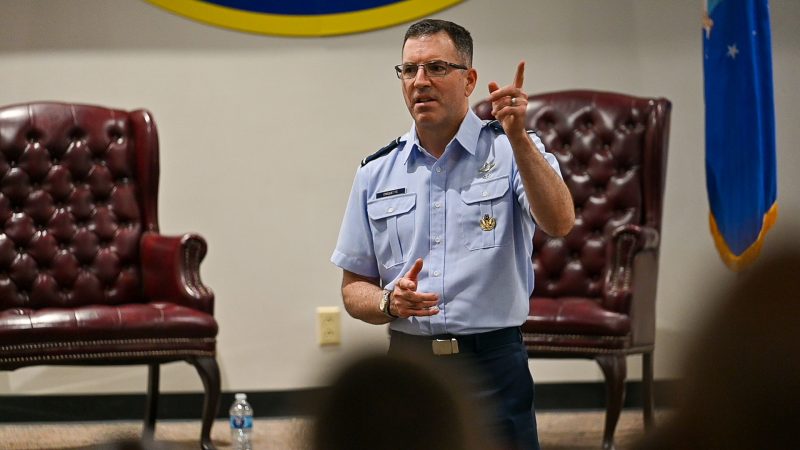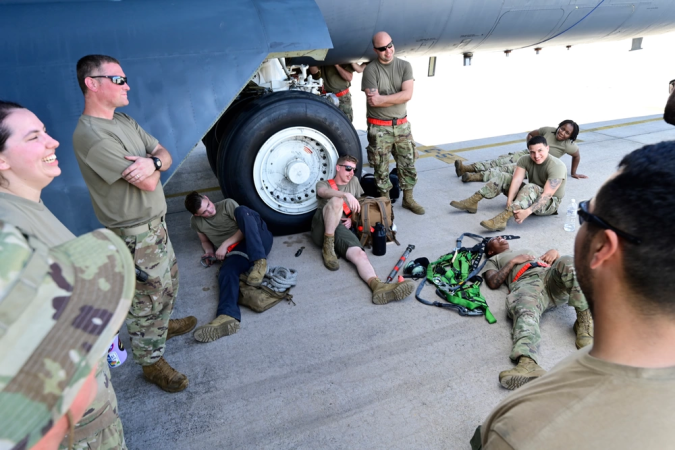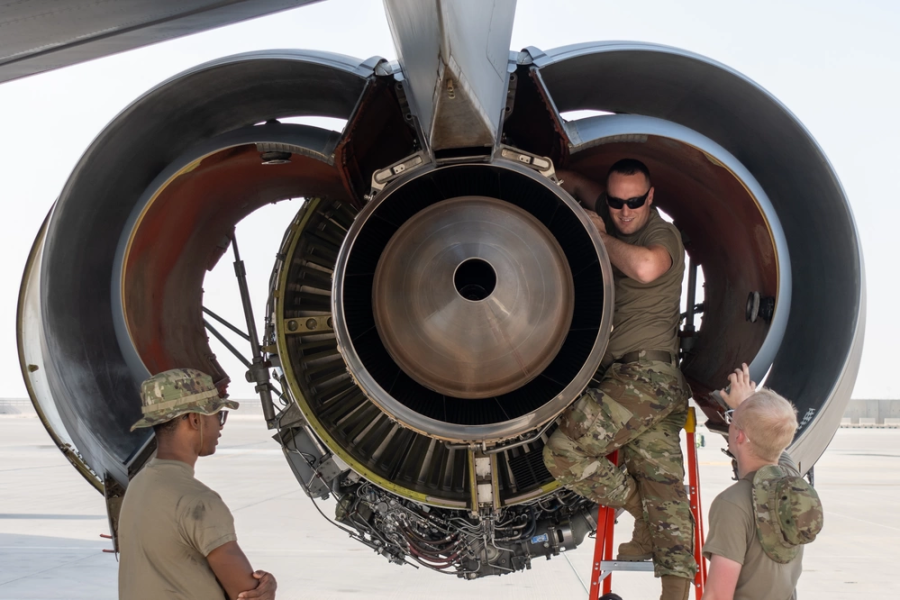A new effort that requires aircraft maintainers to sign a non-disclosure agreement (NDA) so they can access more information about costly accidents will not change the level of transparency surrounding those events, the Air Force’s top safety officer said Oct. 18.
“The truth is, there’s no change in the status of the availability of access to the public, to the private, or to Congress through the [Freedom of Information Act] program, and anything that is not safety privilege,” Maj. Gen. Sean M. Choquette, the Air Force Chief of Safety and commander of the Air Force Safety Center, told reporters.
Earlier this week, news broke that the Air Force is rolling out new annual privileged safety information (PSI) training for maintainers across the service so they can receive the full picture of mishap events–—including factors, findings, causes, and recommendations—and thereby gain a better understanding of what caused them. After the training, maintainers would have to sign an NDA, a contract not to share confidential information.
The move is in response to a bump last year in ground mishaps involving maintenance, aircraft towing, and other flight line work, Choquette explained. The general said it was not a “marked increase or a significant increase, but we saw an upward trend.”
Two types of investigations take place when a mishap occurs. One is an accident investigation board (AIB), a monthslong legal proceeding where the final report is available to the public and can be used for disciplinary and other actions. The other is a safety investigation board (SIB), where the goal is to conduct a root cause analysis and get lessons learned out to the rest of the force as soon as possible.
Since the only goal of the SIB is mishap prevention, safety investigators keep their findings confidential so that people involved in the accident can speak freely about what went wrong, Choquette said. That protection is called safety privilege, meaning the information discussed can’t be released or used for disciplinary action, and the Air Force uses NDAs to maintain it.
“In order for [Airmen] to talk in a fulsome way about what occurred, we don’t want to put them in a situation where they feel like they can’t tell the whole story, because it’s going to come out in an article that’s going to be read by their family or their superiors or their subordinates,” the general said.

For decades, Air Force aircrew have signed NDAs so that when a mishap occurs, aviators across the service can quickly pick up lessons learned from privileged SIB information. Often that information-sharing takes the form of wing commanders bringing all aviators on a base into an auditorium to discuss the issue. But historically, maintainers were not part of those meetings.
“It was purely operations,” Choquette said. “And I can’t tell you why that was the case, but we said, ‘hey, they need to be brought into the fold here, because ground operations mishaps were increasing, and they need to be better trained on where mistakes are being made.’”
In the past, when a mishap occurred, any maintainers involved would be brought into the SIB and sign an NDA afterwards. But because maintainers writ large did not receive privileged safety information training or sign NDAs, the lessons from the SIBs never percolated to the wider force until the AIB came out months later, which does not include all the relevant information because AIBs are for public release.
“The difference now is, instead of just signing an individual or multiple individuals who are involved in a mishap, every maintainer out there will be [provided] the capability to sign that NDA, become a part of the safety privilege system,” Choquette said.
The goal is for all 80,000 maintainers across the Air Force to sign onto the privileged safety information training and NDA requirements so that they can access SIB findings and be better positioned to prevent future mishaps.
“Our hope is that all of them will do that, because it really is protecting them and protecting the system so that will increase our readiness,” Choquette said.
The NDA would be the same one that aviators currently fill out. If maintainers see problems on the flight line, the hope would be for them to notify their chain of command, but if they share safety privilege information to the public, they could face administrative action, just like anybody else who does so, the general said.
One general area that might benefit from privileged safety information training is towing aircraft around the flightline, which has seen “a real increase in mishaps,” the general said.
Towing aircraft may sound simple, but maneuvering in and out of hangars and around other expensive aircraft while adhering to a range of spotter and clearance requirements is a complicated task.
“Those things are written into regulations, but, as in most things, a picture is worth a thousand words,” Choquette said. “If we can take an actual towing mishap, the information that came out of that safety investigation board, put a small group of people or a unit in a room and actually talk through the lessons learned out of that investigation, that drives home the concepts and how important they are and why they’re important.”

At least one crew chief thinks the effort could help maintainers stay safe.
“I think it will aid in obtaining the full picture as a lot comes with a mishap,” the maintainer told Air & Space Forces Magazine on the condition of anonymity. “By that I mean major mishaps being a ‘Swiss cheese’ effect, and usually not due to one major misstep but an accumulation of events or missteps that can build into a perfect storm.”
Wider Reform
The new training is part of a larger safety center campaign to integrate risk and readiness, which aims to better prepare Airmen to make risk-informed decisions.
Officials say the campaign, as well as a wider safety center strategic plan unveiled in April, is meant to ready the force for Agile Combat Employment, a concept where small teams of Airmen launch and recover aircraft at remote or austere airfields, then relocate to avoid being targeted by enemy missiles. Airmen will likely have to carry out those operations without support and without connection to higher command, which is forcing a wider recalculation of risk across the service.
What does that look like in practice? Choquette pointed to the preflight risk assessments aviators perform, where they discuss aircrew qualifications, weather, aircraft conditions, threats, and other factors that affect the mission risk.
The general hopes to translate that practice to maintainers, so that production superintendents or other flight line leaders have a standard process by which they can assess the qualifications of their maintainers, the weather on the flight line, the state of the aircraft, and other risk factors.
That way, “they can make a better risk-informed decision, to execute smartly, or make some mitigations, [such as] ‘hey, I have a three-level supervisor out there, I really could use a five-level today because this is a complex operation we’re doing here, let’s swap these two NCOs out to better execute today,’” the general said.
The risk management could even apply to Airmen’s personal lives, such as whether or not to go skiing in bad weather or take a road trip on Memorial Day weekend.
On an even broader level, as the chair of the Joint Safety Council, Choquette is working with his counterparts to promote similar practices across the services and share best practices for common platforms such as the H-60 helicopter and V-22 tiltrotor transport.
“We share information out so that we’re not just learning from our own information and our own safety prevention systems, but we’re learning from each other,” he said.
